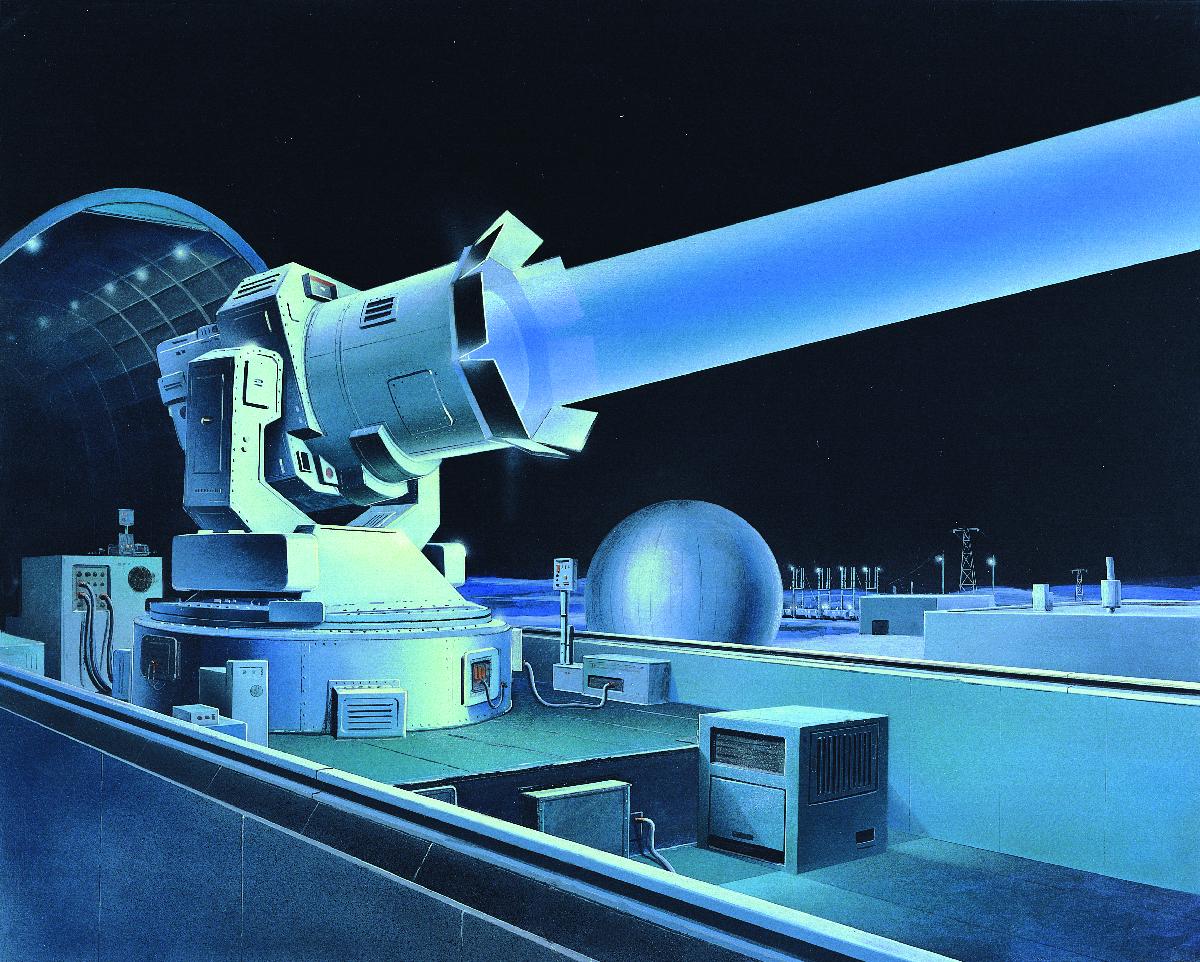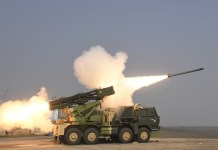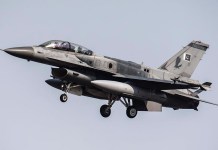On July 30, South Korea’s state arms agency, the Defense Acquisition Program Administration (DAPA), showcased the strike capabilities of the nation’s newly developed laser weapon, designed to neutralize enemy drones.
According to the Yonhap news agency, this demonstration, held for a group of reporters, marked the first public display of the advanced defense system. The event took place at a major weapons test site in Taean County, 108 kilometers southwest of Seoul.
During the demonstration, a DJI Phantom 4 small multi-rotor drone hovered over the coastal waters, approximately one kilometer away from an imposing dark-green container that housed the laser weapon system.
Within seconds, the drone was engulfed in flames, shook violently, and then plummeted 20 meters onto the rooftop of a nearby seaboard building, hitting it with a loud thump.
The demonstration featured three live-fire tests, where the weapon system, similar in size to a shipping container, successfully downed its targets using an invisible directed-energy beam.
The system was operated by three individuals inside and emitted no visible light or sound. Yet, its effectiveness was undeniable as the DJI Phantom 4 drones crashed helplessly after being struck by the laser, the report explained.
The laser weapon operates by generating a laser beam using fiber optics. The beam heats the target’s surface to temperatures exceeding 700°C, effectively disabling internal components like batteries.
While South Korean officials refrained from disclosing exact specifications, they confirmed that the weapon boasts an output of less than 100 kilowatts and a range of under 10 kilometers.
Earlier this month, the Defense Acquisition Program Administration (DAPA) announced plans to mass-produce the laser system, with deployment expected to begin this year.
This development will position South Korea among a select group of countries, including the United States, Israel, and Britain, that are advancing the operational use of laser weapons.
With the deployment of this cutting-edge technology, South Korea aims to enhance its defense capabilities, particularly in addressing the escalating threat posed by North Korean unmanned aerial vehicles.
South Korea’s Focus On Laser Weapons
Seoul’s focus on laser weapon systems is a strategic response to the increasing threat posed by North Korean drones. In December 2022, South Korea’s airspace was breached by five drones launched by North Korea.
Despite deploying fighter jets and helicopters, South Korea failed to shoot down any of these drones. This incident underscored the urgent need for stronger air defenses, prompting President Yoon Suk Yeol to call for enhanced measures.
Therefore, the newly developed laser weapon system is designed specifically to counter drone threats effectively. The weapon, known as Block-I, is cost-efficient at approximately 2,000 South Korean won ($1.45) per shot and is capable of executing precise strikes against small unmanned aerial vehicles.
This advanced system is a product of the collaboration between the South Korean company Hanwha Aerospace and the Defense Acquisition Program Administration (DAPA) under the ambitious laser program dubbed the “Star Wars project.”
The production of the new laser weapon began on July 11, following a contract signed in late June between DAPA and Hanwha Aerospace. This contract, valued at USD 70 million, will see the delivery of the ‘Laser Based Anti-Aircraft Weapon Block-I’ to the Republic of Korea (RoK) Armed Forces starting later in 2024.

While the exact number of systems to be delivered remains undisclosed, all deliveries are expected to be completed by 2026. South Korea’s state arms agency has further plans to expand the laser program to target larger threats, including aircraft and ballistic missiles, potentially revolutionizing defense capabilities.
The long-term vision even includes deploying laser beams in space to engage targets, which would represent a significant technological advancement.
Globally, laser weapons have been attracting increasing attention. Countries such as Israel, China, Russia, France, India, Turkey, Iran, South Korea, and Japan are investing in national programs to develop directed-energy weapons (DEWs).
Earlier this year, the UK announced successful tests of a high-power laser weapon, DragonFire, which typically costs less than $13 per shot. Meanwhile, the United States has also deployed a pair of high-energy lasers overseas to protect bases from drone and missile threats.
The international interest in DEWs stems from their potential to significantly alter military and economic dynamics in favor of the nations that master this technology.
RAND, a prominent think tank, noted that “competing nations are pouring so much investment into DEWs because, if the technology can be matured, such systems hold the potential to tip both the military and economic calculus of modern warfare in their users’ favor.”
With its new laser weapon system, South Korea aims to bolster its defense against the immediate threat of North Korean drones while also positioning itself at the forefront of modern military technology. If this technology matures as planned, it would place South Korea in a favorable position to export it, enhancing its role in the global defense market.
- Contact the author at ashishmichel(at)gmail.com
- Follow EurAsian Times on Google News




